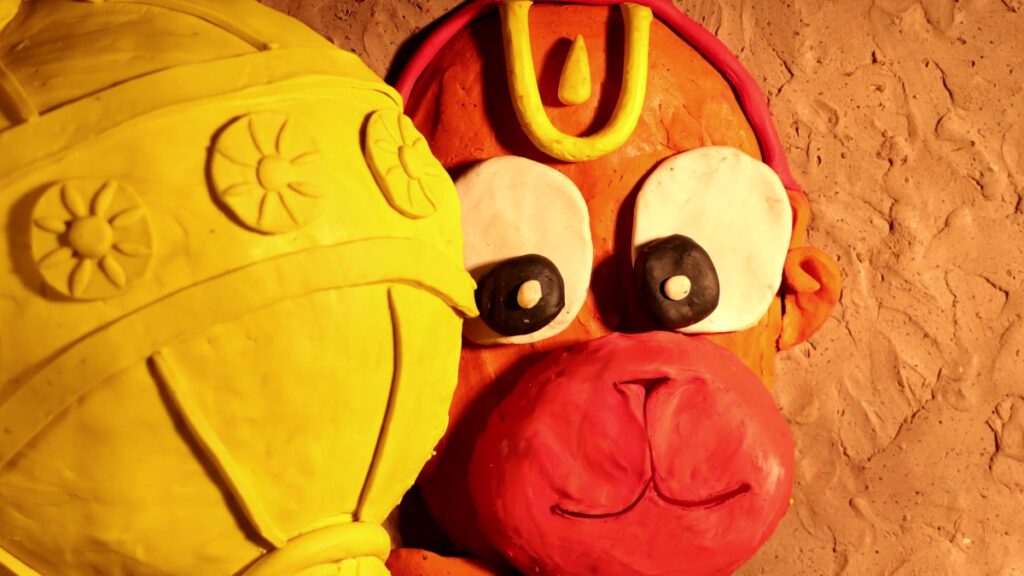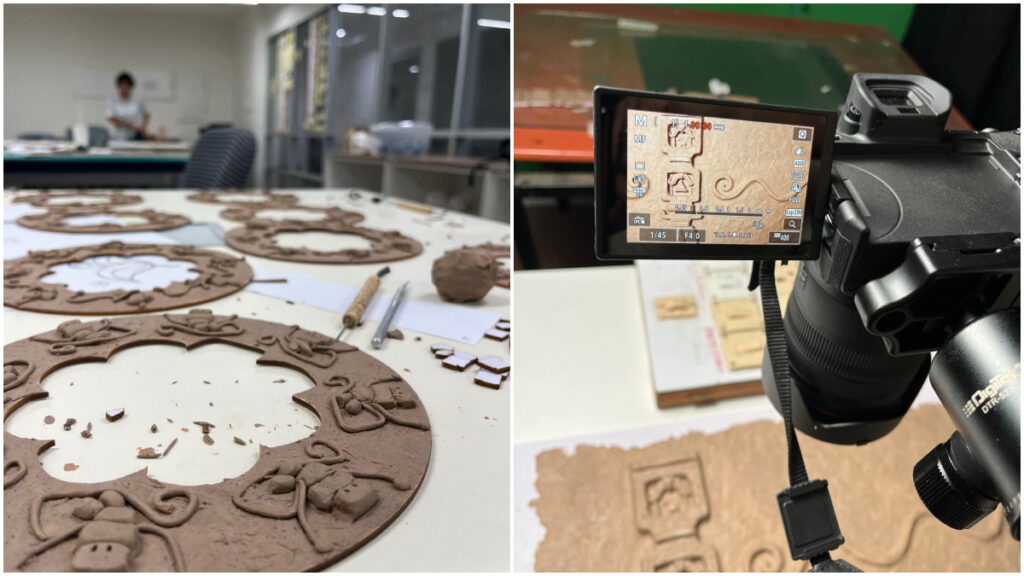Hanuman Chalisa is an Indian hymn dedicated to Hanuman, the Hindu God popularly known as the “Monkey God” outside India. This hymn, written by the Indian saint Tulsidas, is popular and widely sung in temples, at homes and during festivals in many parts of India. With 40 verses, the hymn has various renditions. One such rendition is Chalisa, a clay stop-motion animated musical by researcher, teacher and Indian animation filmmaker Swati Agarwal.
Since Chalisa is a music video, the process began with a soundtrack. “My friend Sudeep Shrivastava composed the music, reimagining Chalisa in a style that’s both playful and soulful,” said Agarwal. “The track weaves layers of electronic music with live Ghatam and flute. As the song progresses, the rhythm gradually intensifies and becomes more melodic.” For the vocals, Agarwal wanted a kid, which is how eight-year-old talented singer Mahika Singh became the voice of the hymn.
Chalking the film’s visual style
When she visited the historic Indian city Hampi in the south a few years ago, the idea for Chalisa was planted in Agarwal’s mind. After the birth of her son, she felt a strong calling to portray Hanuman Chalisa in a way that is both visually powerful and uplifting. Hence, using clay was a conscious decision. “Children easily connect with clay. Many of us have played with our moms’ dough ducks and birds as children,” she explained.
Playing with clay
The focus of Agarwal’s team was to bring out Lord Hanuman’s attributes in this five-minute musical. Two of her team members studied each verse’s significance in addition to reading stories of Hanuman. They took references from Indian temple walls to create storyboards and animatics.
“To bring these ideas to life visually, we used clay on a sunboard to create raised designs inspired by temple murals. Our animated Hanuman character interacts with these carvings. For the more mystical parts of the hymn, we used clay on a glass table that is lit from below, to create a glowing, magical effect that stands out from the rest of the visuals,” she elaborated.
The backgrounds using clay – mixed with sand – were mainly handled by Reechik Banerjee, who drew inspiration from temples and Indian arts to create designs that balanced simplicity and detail.
“Since stop motion doesn’t allow changes after a shot is captured, we ran several trials and tests before animating each one,” revealed Agarwal. “Most of the film was shot with a top down still camera. Our team member Palak Gupta parallely composited the captured frames.”
Creative decisions and challenges
“To get the right look, we mixed sand into skin-coloured plasticine clay. Since the clay was getting hard, we used a hair dryer to soften it for easier carving. While designing Hanuman, we chose a minimal look instead of adding flowing hair and accessories; since the animation involved a lot of morphing, complex details would have made it difficult,” Agarwal highlighted.
“We also used laser cutting for a few shots, like the monkeys leaping in the mandala. We created and cut nine sunboard pieces, each showing a different monkey pose, to animate the movement smoothly.”
Instead of visually representing Hanuman Chalisa word by word, she wanted to convey the spirit of the hymn, making it kid-friendly at the same time. Striking a balance between being overly simplistic and overly sophisticated was a challenge that she eventually overcame.
Agarwal’s previous films Gajar Ka Halwa and Lakshmi Aai Hai, were both based on an elderly couple who looks for ways to enjoy life. “I like narrating stories that depict humour, warmth, and real-world observations. Because animation is a beautiful and tactile art form, it allows me to portray what’s within me,” she expressed.
Apart from filmmaking, she is passionate about teaching and regularly conducts stop motion animation workshops for people of all ages. She is currently pursuing a PhD in animation, during which she is exploring experimental techniques—some of which have the potential to evolve into compelling films in the near future.





